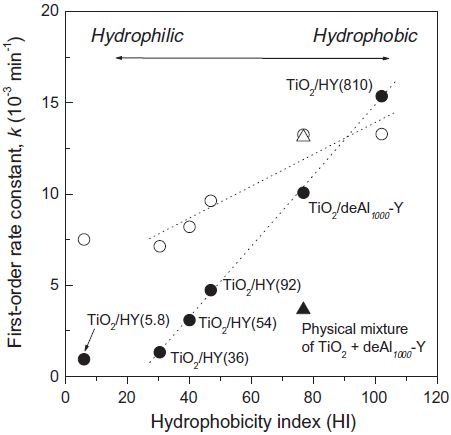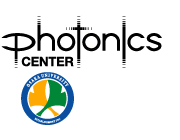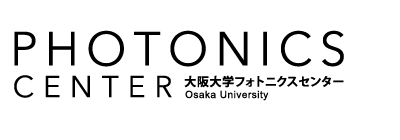【研究成果】2012
研究成果54
TiO2 photocatalyst for degradation of organic compounds in water and air supported on highly hydrophobic FAU zeolite: Structural, sorptive, and photocatalytic studies
Yasutaka Kuwahara, Junya Aoyama, Keisuke Miyakubo, Taro Eguchi, Takashi Kamegawa, Kohsuke Mori, Hiromi Yamashita
Journal of Catalysis 285 (2012) 223-234
Highly hydrophobic FAU zeolite was prepared by a two-step preparation method and was utilized as a support for TiO2photocatalyst. The photocatalytic degradation rates were significantly improved both in aqueous- and in gaseous phase reactions because of its improved hydrophobic character, which was clearly elucidated on the basis of sorptive analyses and photocatalytic tests. It was also practically demonstrated that the photocatalytic efficiency of zeolite-supported TiO2 is strongly associated with the surface hydrophobicity of zeolite and the corresponding adsorption kinetics of water and organic molecules. We expect that this preparation route will be extendable to the other types of zeolite materials by optimizing the preparation conditions, although the highest hydrophobicity was observed in FAU zeolite. Due to their prominent hydrophobicity, they could advantageously replace conventional molecular sieves, adsorbents, and catalyst supports in the specific applications that require a high affinity with organic molecules. In particular, the combination of a TiO2 photocatalyst with the hydrophobic FAU zeolites is expected to greatly assist photocatalytic degradation reactions involving organic molecules and will expand the application of TiO2photocatalysts for environmental remediation.




